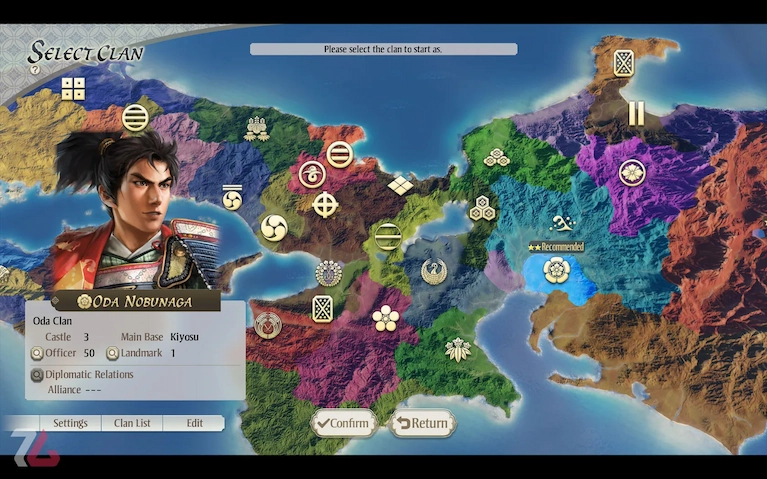Nobunaga’s Ambition: Awakening is the sixteenth entry in the long-running historical strategy and simulation series that began back in 1983. Set during Japan’s Sengoku (Warring States) era, the franchise has always focused on political, military, and economic power struggles between warlords. With the recent release of the Complete Edition, players can now access all previously released DLCs in one massive, content-rich package. It’s a dream come true for longtime fans—and a serious challenge for newcomers.
Take Command in Feudal Japan
The story centers around Oda Nobunaga, the legendary warlord credited as the architect of a unified Japan. However, players aren’t limited to Nobunaga—you’re free to choose from a variety of historical daimyos, each with unique advantages and challenges. The game offers numerous scenarios, some based on real historical events and others entirely fictional.
Whichever faction you choose, your goal is clear: unify Japan. Whether through war, diplomacy, or cunning alliances, your path to power is up to you.
Deep Strategy, for Better or Worse
If the game’s visuals remind you of Crusader Kings or Civilization, you’re not wrong—but the closer comparison is probably the Total War series. That said, Nobunaga’s Ambition: Awakening goes even deeper in some areas, particularly when it comes to management systems. And that depth is both a strength and a weakness.
For seasoned strategy veterans, the level of detail and complexity is incredibly rewarding. But for new players, it can feel overwhelming. There’s a steep learning curve, and even the detailed tutorials require solid English comprehension and a good few hours of experimentation to fully grasp.
New Systems: Delegation and Retainers
One of the most significant improvements in this edition is the introduction of a retainer system, where you assign territories to trusted commanders. These retainers, guided by independent AI logic, can develop local economies and military infrastructure, and offer suggestions that influence your empire’s future.
While this reduces some of the micro-management burden, it doesn’t make the game any easier overall. There are still countless systems to manage: economics, construction, military training, diplomacy, and commander loyalty all require close attention and thoughtful decision-making.
Tactical Battles with Meaningful Choices
The battle system is another highlight. While not as cinematic or flashy as Total War’s 3D battlefield, combat in Awakening is still highly tactical and immersive. Each encounter pulls you into a separate battle screen, where strategic positioning and timing matter a lot.
You’ll need to decide how to split your troops, which units to target first, and how to time your attacks. These decisions have direct consequences, and the thrill of watching a well-planned maneuver lead to victory is incredibly satisfying.
Large-scale battles, especially those over key provinces, are tense and dynamic, demanding quick thinking and long-term planning alike.
Strategic Layers Beyond War
It’s not just about fighting—economic planning and diplomacy play equally important roles. Sometimes, winning a war isn’t about brute force, but smart negotiation or manipulation. This variety in gameplay encourages multiple paths to success, making each campaign feel different from the last.
Interface and Platform Experience
While the user interface is dense and sometimes cluttered—especially on console—the PC version handles it much better. On console, the complexity of menus and navigation can be frustrating. This makes the PC version the ideal choice for players seeking a smoother experience.
Audio-Visual Presentation
For a strategy game, Nobunaga’s Ambition: Awakening looks quite good. The visual style is clean and appropriate, and the detailed maps enhance the immersion. Traditional Japanese music plays in the background, adding emotional depth and reinforcing the historical atmosphere. It’s subtle, but effective.
Final Verdict: A Deep Strategy Gem for Hardcore Players
Nobunaga’s Ambition: Awakening Complete Edition is a rich, intelligent, and demanding strategy game that rewards patience and deep thinking. With its detailed systems, massive content volume, and improved battle mechanics, it stands as one of the most complete entries in the franchise.
However, its complexity and slow onboarding mean it isn’t for everyone. If you’re new to grand strategy games, expect a steep climb. But if you’re a fan of deep simulation, historical warfare, and multi-layered decision-making, this game will keep you hooked for dozens—if not hundreds—of hours.
